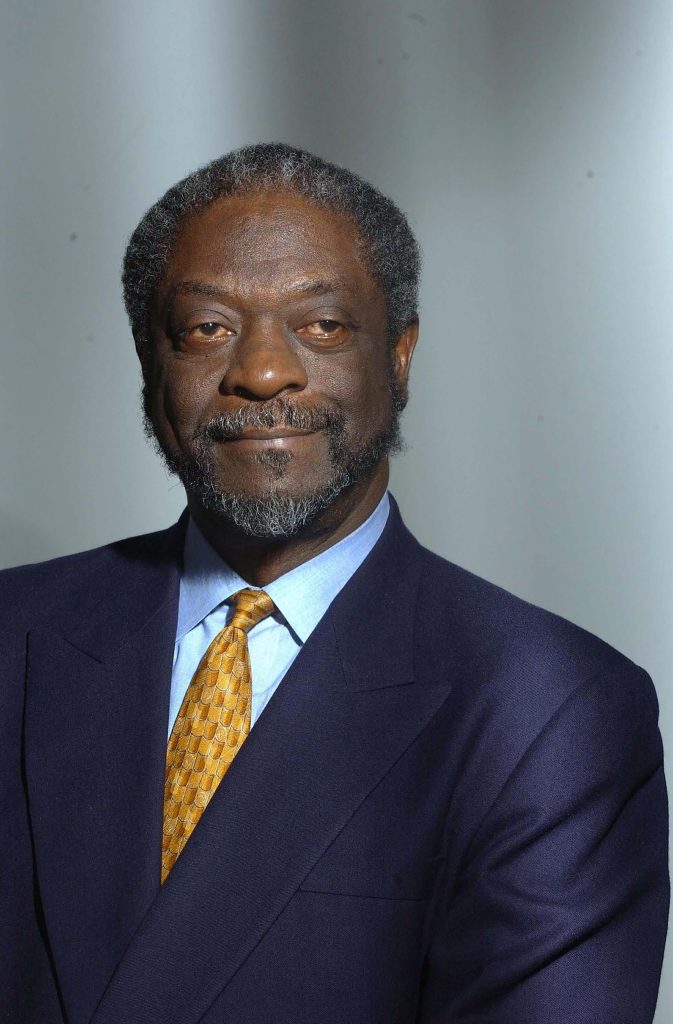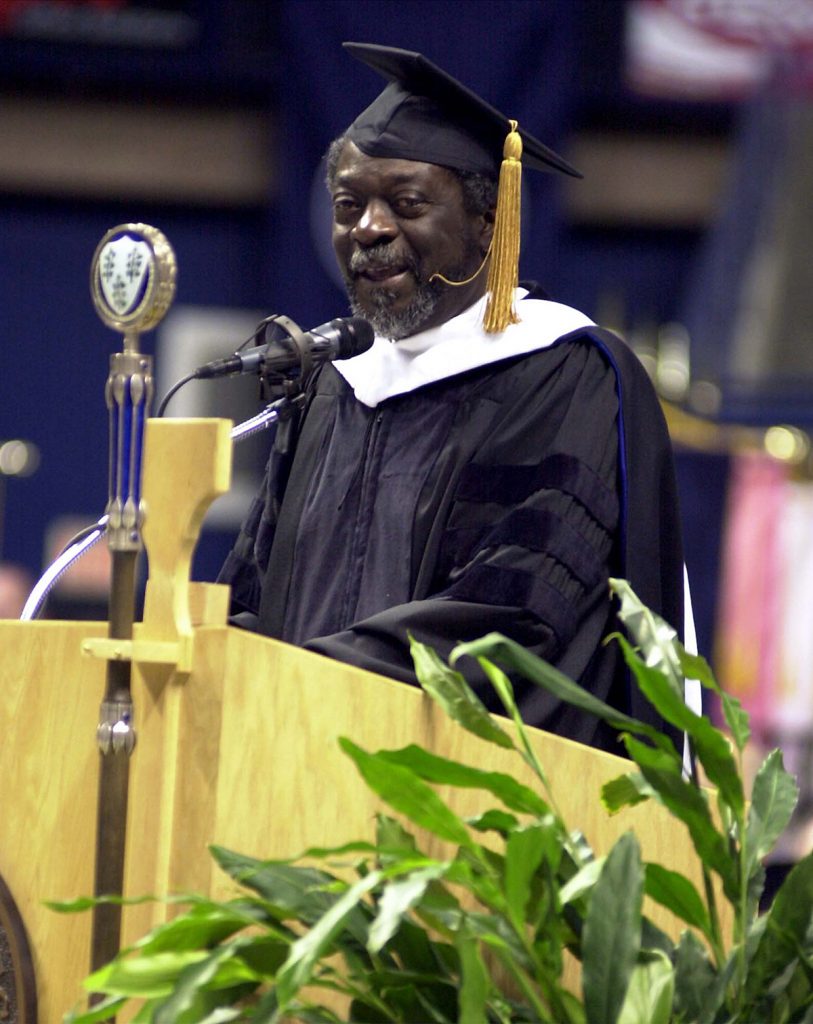by Debra Vanderburg Spencer
There will continue to be articles about the professional accomplishments of Les Payne, Pulitzer Prize-winning Journalist, admired and loved by many. Les Payne passed on March 19, 2018 at his home in Harlem while putting the finishing touches on what would be the definitive book on Malcolm X.

I first met Les Payne as a student in Boston completing studies in art history, and working toward a graduate degree that I received in 1979. The previous year, the National Association of Black Journalists (NABJ), which was founded by Les Payne, held their annual conference in Boston. My fellow students and I viewed it as yet another opportunity to meet and interact with luminaries of the ‘real world’ whose advice would surely prepare us for life after graduate school. We were anxious to meet top journalists and documentary filmmakers we had discussed in class and private study groups—personalities such as Les Payne, St. Clair Bourne, Clayton Riley, among others. For us, the NABJ conference was a hot ticket item.
Of those in attendance, Les Payne loomed above his colleagues. We were in awe of the methodical mind of this fearless trailblazer. Of his major accomplishments at that time were the Soweto uprising that began in 1976; he uncovered that the number of those murdered far exceeded the official death count. Secondly, he was the first reporter to break the Patty Hearst kidnapping story. In a communication with a colleague e years later he would say that he watched the first two parts of CNN’s account of the kidnapping of Patty Hearst four decades earlier and was reminded anew of how badly Newsday beat the San Francisco bureau of the New York Times, and gave the West Coast newspapers a run for their money. The then publisher of the LA Times stated that he didn’t know “who that Newsday reporter, Les Payne, is but he’s kicking our ass.” Les would go on to trace the heroin drug trail from its source to its entry into the United States, and for that win a Pulitzer Prize.

Years later, we would encounter each other again. Working as an independent curator and in arts management in New York, I would see Les Payne at exhibition openings and related events. I then learned that Les had another persona: a devoted patron of the arts who supported arts causes and developed an impressive collection of fine art. He and Violet, his wife of 50 years, own works by major artists including Jacob Lawrence, Charles White and Romare Bearden.
Harlem Salons
Known for their patronage of the arts, the Paynes also organized a series of “old fashioned Harlem Salons” at their brownstone. Les loved bringing people together and was committed to community building. At each Salon he’d announce that it was not a party but rather a forum to reconnect with old friends and form new relationships. The Salons, by invitation only, were attended by an intergenerational mix. One might find oneself in conversation with, say, Walter and Linda Evans, Bill Rhoden, Byron and Sylvia Lewis, Randy Daniels and wife Judge Sallie Manzanet-Daniels, Maurice DuBois, Tim and Daphne Reid, Randall Pinkston, Ron Howell, Royal Shariyf, Dr. Cynthia Barnes, Milton Allimadi, Malcolm X’s daughter Ilyasah Shabazz.
His Oldest Friend
Aside from Les’ family, the person who has known him the longest is his friend since grade school, Dr. Walter O. Evans, a retired physician now living in Savannah with his wife, Linda. The owner of the largest private collection fine art produced by African Americans, it was he who introduced Les to artists such as Romare Bearden, Jacob Lawrence and Richard Hunt. Walter reminisces:
Sixty-one years! That’s how long I have known Les. We met in Hartford, Connecticut, the very day I got off the train, coming from Savannah, Georgia, just after I had completed the 8th grade in June, 1957. The following day, I joined him, my cousin Joe and several of their friends (mostly transplants from the south) working on a tobacco farm just outside of Hartford. Have been best of friends since, visiting each other periodically several times per year though living in different cities. Les and Vi visited me here in Savannah just a few weeks ago and I last talked to him on Sunday, the day before he passed. Naturally, I am devastated by his demise.
Dr. Evans credits his friend as being the stabilizing force in his life. Les has always had an influence on me not only by his words but by being the steady and rational person in my group of friends. I often ask myself, ‘How would Les have handled this?
Our Art Connections
A few years ago Les invited me to join him and a friend, that he refused to identify, for dinner. That person turned out to be someone I hadn’t seen in many years, the distinguished sculptor Richard Hunt. I was overjoyed! Richard was in town to personally deliver a sculpture purchased by Les and Violet for their collection. We have remained in contact ever since.
In 2013 Les informed me he met Tim of “Tim Rollins and KOS” who credited me for receiving their first public funding; as a consultant to the National Endowment of the Arts in the 1990s I endorsed their newly formed art education program. Tim and I reconnected at KOS’s opening reception at Lehmann Maupin Gallery, Chelsea. Tim Rollins died January 8, 2018.
The first art collaboration with Les was a fundraiser I spearheaded for the Abyssinian Church’s Aby Fund resulting in a successful exhibition/auction of contemporary Ethiopian art. It was the beginning of a great friendship with the Payne family. A week before Les passed we spoke about a follow-up meeting with Reverend Itang Young, Director of the Aby Fund, to further discuss a second fundraiser.
The loss of such a rare, multifaceted, and richly productive individual to community as was Les Payne is incalculable. We were blessed to have him. I was among the privileged to call him friend.
My love and condolences to Violet, Tamara, Jamal and Haile Payne.

